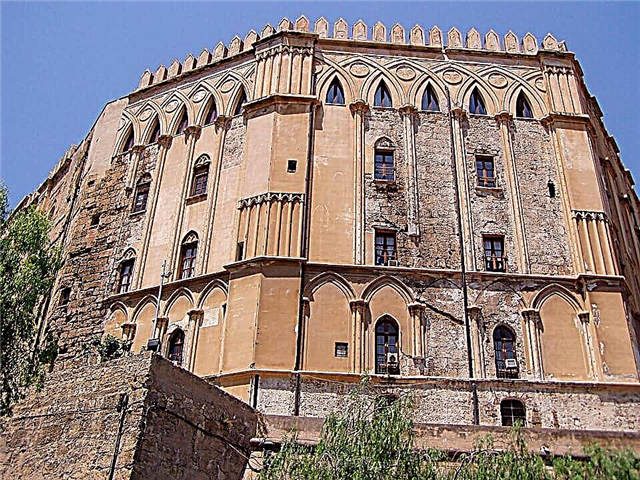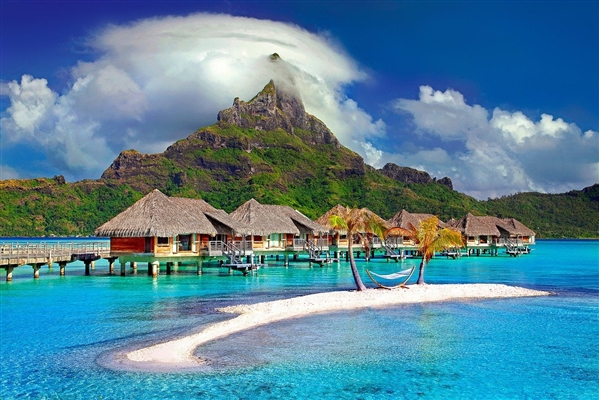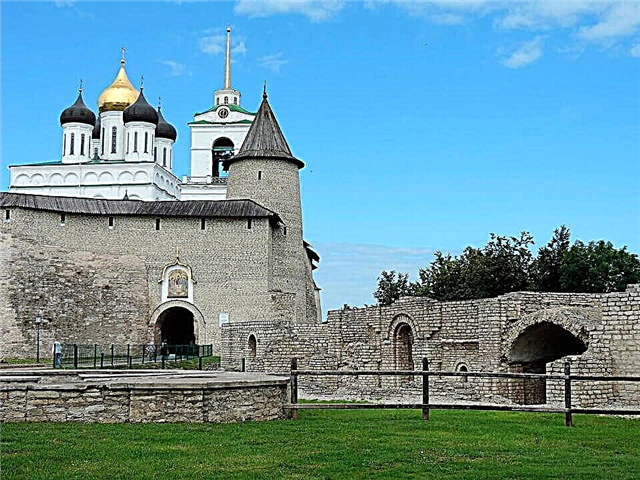Location: Peru, 6 km from Aguas Calientes
Discovered: in 1911 by Professor Hiram Bingham
Main attractions: Sacred Square, Burial Stone Lodge, Temple of the Condor, Terraces of Machu Picchu, Sacred Stone, Royal Tomb, Intivatana
Coordinates: 13 ° 09'49.4 "S 72 ° 32'41.5" W
Content:
Short description
The ruins of Machu Picchu - "the lost city of the Incas" - are hidden in the jungle thickets high in the Peruvian Andes and are surrounded on three sides by the turbulent mountain river Urubamba. The city was built as a sanctuary in 1438 by the ninth ruler of the Inca Empire - Pachacutec Yupanqui.

General view of the ancient Inca city of Machu Picchu
The Spanish colonialists who invaded Peru in the 1520s were never able to locate the citadel in which the Incas took refuge, unwilling to obey the foreigners. For more than 300 years, only legends circulated about the existence of the city, and just 100 years ago, the Inca stronghold again "rose from oblivion" thanks to the American archaeologist Hiram Bingham. According to legend, Bingham met several peasants working on the slopes of the Andes, and gave one of them silver salt (equivalent to 30 American cents), for which he agreed to show the archaeologist the way to the "lost city".

Development in Machu Picchu
At the top of the inaccessible mountain range, Bingham saw hundreds of enormous stone-paved terraces and stone ruins of houses. The city got its name from the name of the nearby mountain - Machu Picchu ("Old peak"). Bingham removed 4,000 Inca items from Machu Picchu. In 2011, the artifacts from the Yale University Museum (USA) were returned to Peru.

Machu Picchu - the city of sunny maidens
Presumably Machu Picchu served as a center for sun worship, where only a select few were allowed. Priestesses lived here - solar maidens who dedicated their lives to the cult of the Sunas well as nobles and their servants. Religious rituals of the Incas are devoid of the chilling cruelty characteristic of the Mayan and Aztec cultures.
To win the favor of the sun god Inti, the Incas brought him corn, coca leaves, guinea pigs and llamas as gifts. At dawn, the priests killed a white llama, and at dusk - a black one. The main sacred plant was considered to be the coca bush, or coca, which has a narcotic effect and helps to enter a trance during religious ceremonies.

Temple of the sun
Coca leaves were also chewed by slaves to relieve fatigue after hard work. According to archaeologists, the population of the city did not exceed 1200 people, and the skeletons found here suggest that there were 10 times more women in Machu Picchu than men. The city flourished, with its inhabitants growing maize, potatoes and other vegetables at an altitude of 3000 meters. Right in the rocks, the Incas cut terraces, covered them with earth from the Urubamba river valley and erected massive retaining walls that protected the beds from the sun, wind and sand drifts. Gardens were fragrant all year round in Machu Picchu, and the irrigation canals, wells and baths were full of fresh water.

Inside the Temple of the Three Windows
Machu Picchu - "the place where the sun is tied"
Unknown architects built about 200 structures in Machu Picchu. The city has a clear structure and is divided into sections: cemetery, prisons, residential area and temples... Astronomical observations were made from the Solar Tower, and on the day of the winter solstice, its window was illuminated by the sun's rays. The Temple of the Three Windows is also associated with the cult of the Sun: through its windows, the sun's rays fell on the sacred square. A little higher than the temple is Intivatana ("The place where the sun is tied") - a polygonal block carved into the rock, which served as a sundial.

Burial Stone Lodge
The priests "tied" the sun to this stone pillar, trying to stop its movement on the days of the winter solstice. The skill of the local builders and masons is admirable. The palaces and houses of Machu Picchu are built of stone blocks that fit together with amazing precision without the use of cement or other bonding solutions. The boulders hold each other due to their own mass, and the supporting terraces, erected at an angle, provide stability during earthquakes.

Intivatana
Close to the edge of the abyss stands the powerful circular building of El Torreon, carved out of the rock - the sanctuary of the Incas and the burial place of their rulers. Around 1532, the inhabitants of Machu Picchu left the city for unknown reasons, leaving beautiful architectural creations to their descendants.











